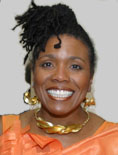The ebb and flow of people in one’s life is always amazing. I have had the great fortune to count among my friends a lot of wonderful jazz people. Our paths cross, then diverge, then cross again somewhere down the line. Often, years intervene. Back in the days when I was enjoying Monday nights at the Vanguard, or any night at Bradley’s (a tiny bar on University Place that hosted the world’s best jazz pianists and was the musicians’ late night hang out), one of my favorite people to hang with was Carol Sloane. Carol is a superb interpeter of a lyric, truly one of the best jazz singers, and sadly underrated. If you are not familiar with her work, get thee to Amazon now! One of my favorites is the 1988 recording Love You Madly, with Kenny Barron, Rufus Reid, Akira Tana, Art Farmer and Clifford Jordan. It’s one of Carol’s favorites, too.
Anyway, about the mail. Carol wrote to fill in a few details about Joe Williams’ recording date with the Thad Jones/Mel Lewis Jazz Orchestra:
Memories of this record date flood back to me. I was there, as Joe’s guest. He had been singing at The Half Note, and he told me that the date was scheduled for a few hours’ hence. He came to my apartment (35th & Third) and flopped on the sofa for a while. Slept a bit, I think. Then we went uptown for some breakfast and on to the date.
She also questioned my memory of “the plaintive sounds of Bob Brookmeyer’s arrangement of Willow Weep for Me.”
I asked Bob to listen to a recording of Mildred Bailey’s gentle version of a song I liked called “Willow Tree”. He responded to it, and of course, eventually wrote a gorgeous chart. He may also have written one on “Willow Weep For Me”, but I suspect you may have confused the two. It wouldn’t be the first time.
Well, it turns out we are both right. First I looked at my CDs and found that the band had recorded both ‘willow’ songs, but the credits did not list the arrangers. Still in a quandry, I decided to go to the source. I called Brookmeyer, who promptly informed me that he wrote five charts for that fine band: St. Louis Blues, ABC Blues, Samba Con Getchu, Willow Tree, and Willow Weep For Me. He also happened to mention that he is about to launch a new project online with ArtistShare. When he launches, I will let you know, and at that time I will tell you more about the brainstorm that is ArtistShare.


 My favorite male singer has always been Joe Williams. I never got to hear him sing live with the Thad Jones-Mel Lewis Orchestra, but one of my favorite recordings from the days of yore was an early morning session they did with Joe in 1966. When I say early morning, I don’t mean the wee small hours — which might have been preferable as the band had been playing the night before until one or two o’clock in the morning. With a recording session just a few hours off, most of them didn’t bother to go home. They just hung out, had few drinks, ate some breakfast and showed up at the studio ready to play some more.
My favorite male singer has always been Joe Williams. I never got to hear him sing live with the Thad Jones-Mel Lewis Orchestra, but one of my favorite recordings from the days of yore was an early morning session they did with Joe in 1966. When I say early morning, I don’t mean the wee small hours — which might have been preferable as the band had been playing the night before until one or two o’clock in the morning. With a recording session just a few hours off, most of them didn’t bother to go home. They just hung out, had few drinks, ate some breakfast and showed up at the studio ready to play some more.  Have you ever heard of Nedra Wheeler? I can’t believe that I have not been aware of her until now, especially when I read her credits that include live and recorded performances with Ella Fitzgerald, Billy Higgins, Harper Brothers, Cedar Walton, Branford Marsalis, Billy Childs, and Stevie Wonder, to name just a few.
Have you ever heard of Nedra Wheeler? I can’t believe that I have not been aware of her until now, especially when I read her credits that include live and recorded performances with Ella Fitzgerald, Billy Higgins, Harper Brothers, Cedar Walton, Branford Marsalis, Billy Childs, and Stevie Wonder, to name just a few. after Cannonball’s untimely death. In the words of Nat Adderley, “Cannon considered Big Man one of the most important projects of his whole career. Since he had a pretty big career, you can get some idea of what it meant to him to compose the score for a full-scale musical play, and particularly this musical, dealing with a theme that has major significance for all Americans and particularly for all black Americans.”
after Cannonball’s untimely death. In the words of Nat Adderley, “Cannon considered Big Man one of the most important projects of his whole career. Since he had a pretty big career, you can get some idea of what it meant to him to compose the score for a full-scale musical play, and particularly this musical, dealing with a theme that has major significance for all Americans and particularly for all black Americans.” 